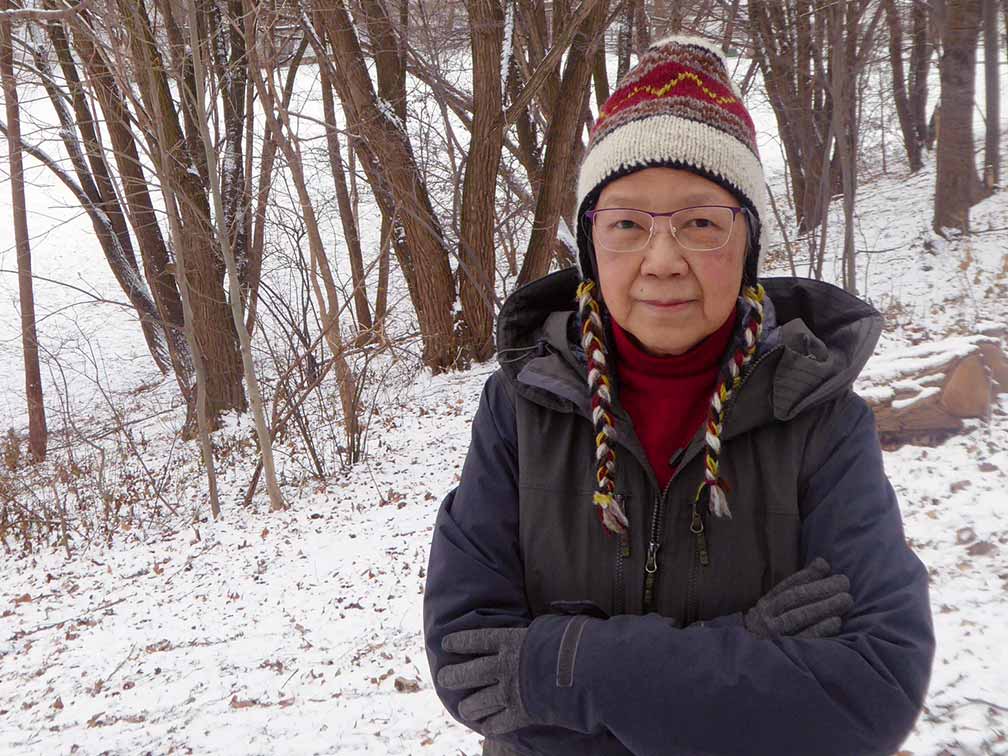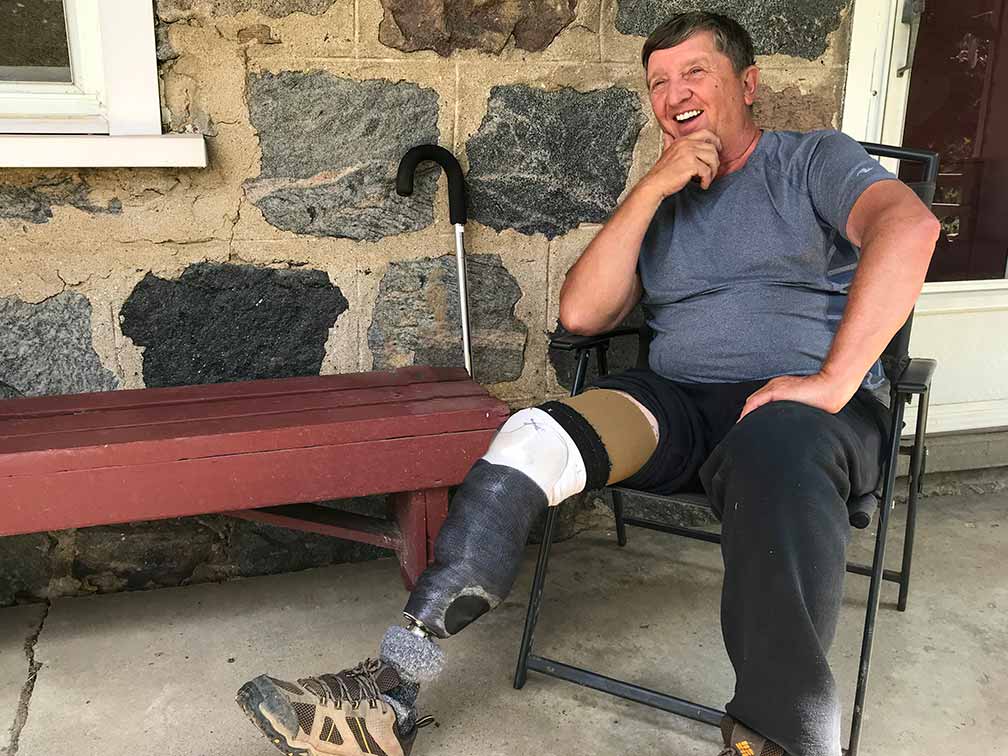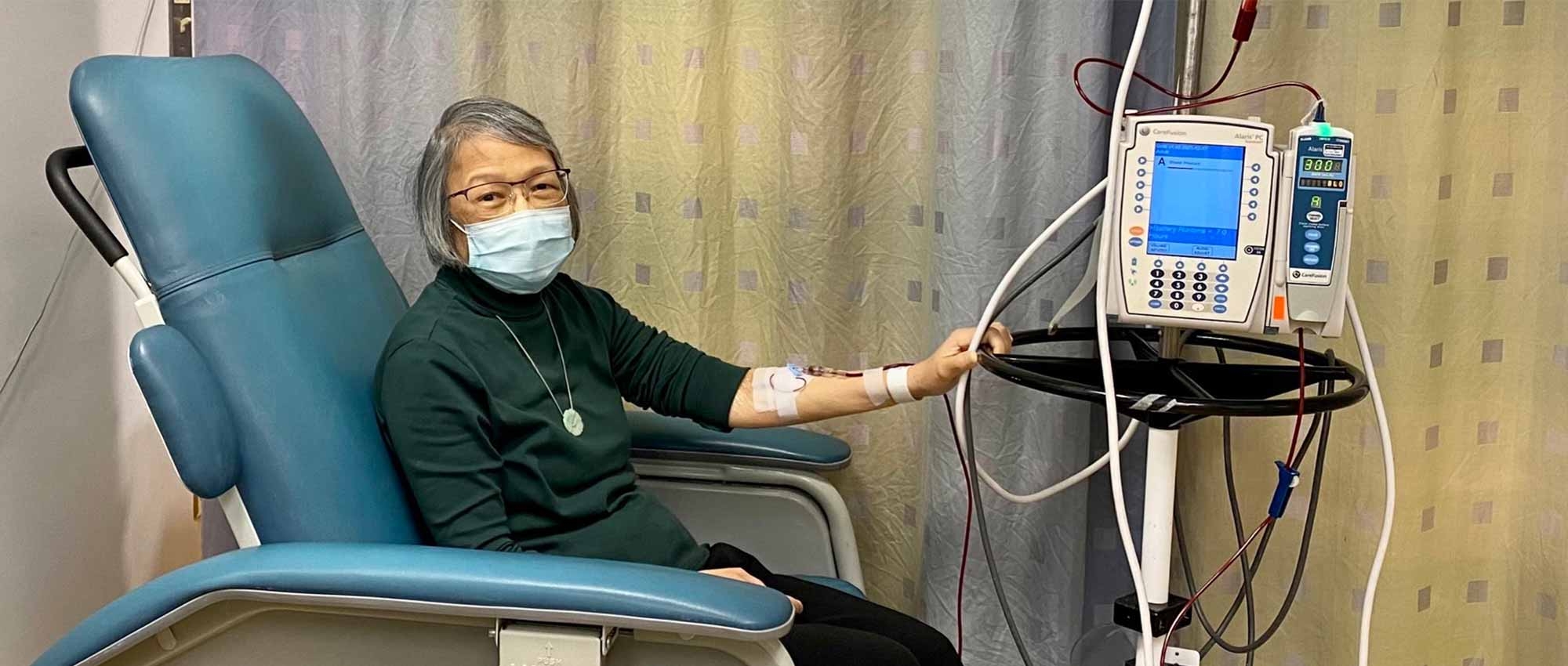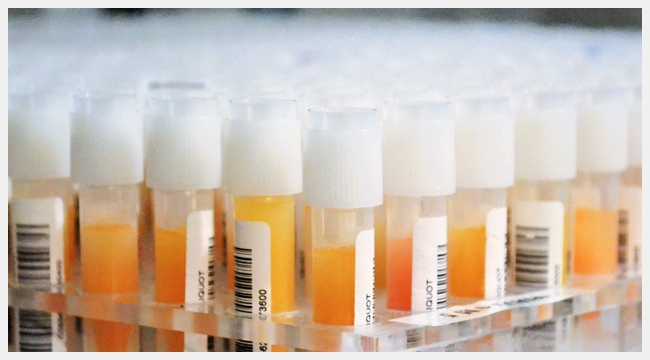Helping patients with rare diseases
Rare Disease Day takes place on the last day of February each year
Wai Yin Mok, above, relies on blood transfusions every few weeks to treat severe anemia of unknown origin. Today, patients across Canada need donors more than ever. You can donate blood or plasma, join the stem cell registry, and register your intent to donate organs and tissues. Please give like lives depend on it — because they do.
The first-ever Rare Disease Day was marked in 2008 on Feb. 29. The date itself is rare, appearing on the calendar just once every four years. Since then, Rare Disease Day has been recognized annually on the last day of February, including in Canada.
According to the Canadian Organization for Rare Disorders (CORD), a rare disease is a condition affecting fewer than one person in 2,000 in their lifetime. Such conditions affect about one in 12 Canadians, two-thirds of them children.
Canada's Lifeline supports many patients with rare disorders. They may need blood, stem cells or medication made from plasma. We've shared many patients' stories over the past year. Here are just a few of them.
The incredible story of how plasma donations help patients

Products made from donations of plasma, a straw-coloured component of blood, have been an important part of Dean Lower's treatment for chronic inflammatory demyelinating polyneuropathy (CIDP).
Dean Lower of Calgary, Alta., was a healthy 51-year-old financial industry executive when he developed chronic inflammatory demyelinating polyneuropathy (CIDP), a disorder in which the body's immune system attacks the nerves.
"They told my wife I most likely wouldn't survive ICU, and that if I did I would most likely be quadriplegic. Or best-case scenario, paraplegic," recalls Dean of his second admission to hospital after developing symptoms.
Donations of plasma — the straw-coloured liquid component of blood — helped save Dean from paralysis. He shared his story to help others understand plasma's importance for patients across Canada, including many with very rare conditions.
Read more: The incredible story of how plasma donations help patients
Blood donations are essential in her fight against a mystery illness

Wai Yin Mok relies on blood transfusions every few weeks to treat severe anemia of unknown origin.
For some patients with rare conditions, even diagnosis is a long and difficult journey. For Wai Yin Mok of Toronto, Ont., that journey is ongoing.
In 2017, for reasons that are still unclear, Wai Yin developed critically low levels of hemoglobin — the iron-containing molecule that transports oxygen throughout the body. As treatment, she requires blood transfusions every few weeks.
"The blood donors are part of myself at this stage in my life," she says. "When I'm out hiking, enjoying the air, the water, the forest, I like to think that I am sharing the joy and serenity with the blood donors."
Her doctors' long and ongoing search for answers has included an analysis of Wai Yin's bone marrow. It turned up two genetic mutations, one of which is linked to a rare type of hemolytic anemia with only 60 cases reported worldwide.
"About 50 of them were related to a large extended Swedish family, and the remaining 10 or so are in Caucasian North Americans in the United States," explains Wai Yin. "The doctors said, ‘You may be the first Asian case that we're aware of.'"
Read more: Blood donations are essential in her fight against a mystery illness
A life beyond sickle cell disease, thanks to a stem cell donor

Ufuoma Muwhen was cured of sickle cell disease by a transplant of stem cells from her sister.
Ufuoma Muwhen of Edmonton, Alta., inherited sickle cell disease, a disorder which causes the development of abnormal hemoglobin. Hemoglobin is the molecule in red blood cells that delivers oxygen throughout the body.
Patients with sickle cell disease can suffer great fatigue, pain, organ damage and more. They may rely on occasional or very regular blood transfusions. Ufuoma's symptoms required her to be hospitalized three or four times per year. Today, however, she is thriving, after receiving a transplant of stem cells from her sister.
Stem cell transplants are used to cure many life-threatening conditions, and Canadian Blood Services encourages people between the ages of 17 and 35 to register to donate. A patient's best chance of a matching donor is with someone who shares their ethnic background, so our stem cell registry should be as diverse as our country.
Read more: A life beyond sickle cell disease, thanks to a stem cell donor
Blood donations helped him survive illness, and then a critical injury

Darcy Wagner receives medication made from plasma, a blood component, to treat a rare immune disorder. Blood donors also saved his life in another way in 2020 when he was critically injured.
Darcy Wagner battled chronic health infections for most of his life because of a rare immune disease called hypogammaglobulinemia. This disorder is part of a group of conditions which prevent the body from making enough antibodies to fight infection.
To stay healthy, Darcy's treatment for the past three decades has included regular transfusions of immunoglobulin, a medication made from donated plasma ― one of the components of whole blood.
In summer 2020, blood donors came to Darcy's rescue in another way as well, when he was critically injured while working on his farm.
Read more: Blood donations helped him survive illness, and then a critical injury



